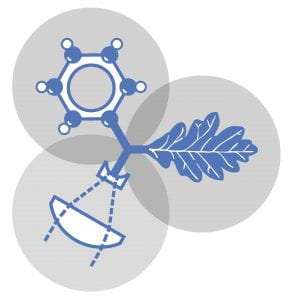
Motility allows diverse types of organisms from bacteria to humans to seek out favourable environments providing, for instance, nutrients, light, or company. Often motility behavior follows particular patterns: For example, roaming and dwelling in C. elegans worms, or truncated Lévy flights in human mobile phone users. It stands to reason that there must be a relationship between the type of motility pattern an organisms uses and the typical tasks that nature selects it to perform well in. On the other hand, how an organism moves must also be limited by what is physically possible: Worms cannot fly. Thus, both ecology and physics must play a role in the natural selection of motility patterns.
At the Rowland, the Taute Lab used the simplest motile organisms – bacteria – to study how natural diversity in motility patterns is shaped by physical constraints and ecological requirements. Their main tool is a simple 3D tracking technique which allows the rapid characterization of the motile behavior of almost arbitrary bacterial species at high throughput.